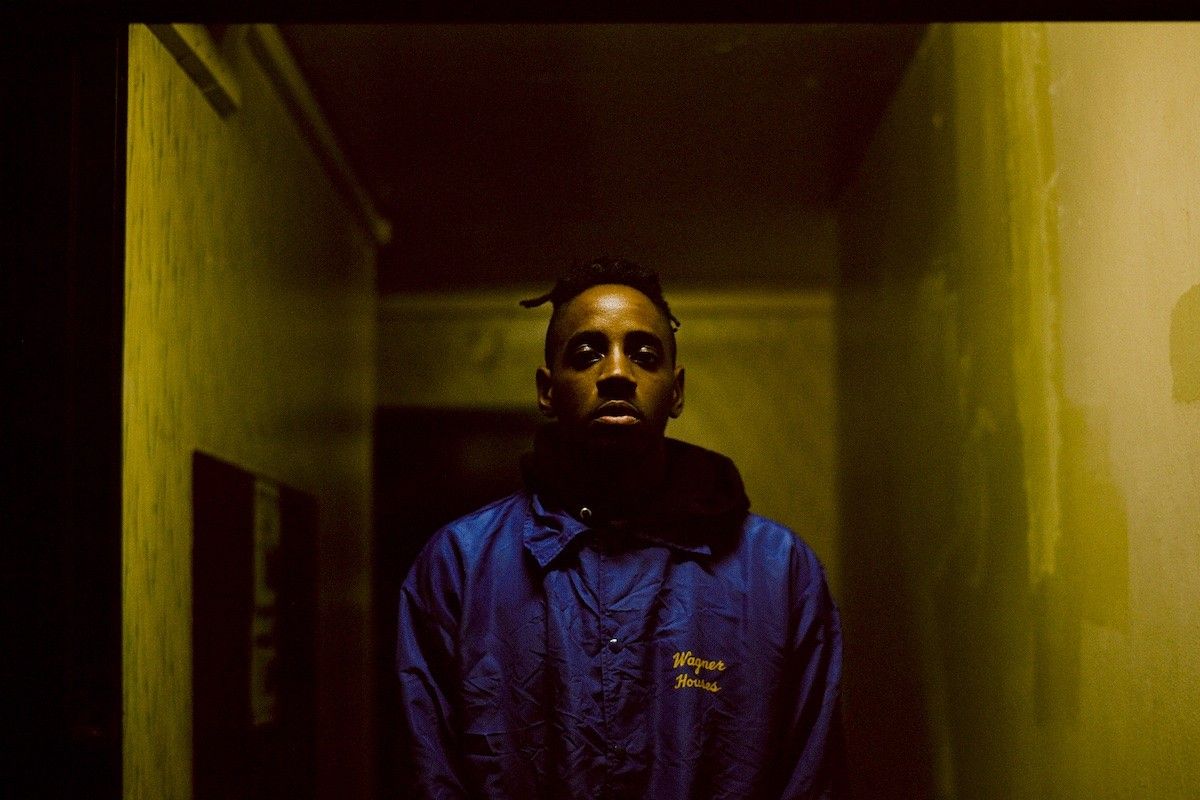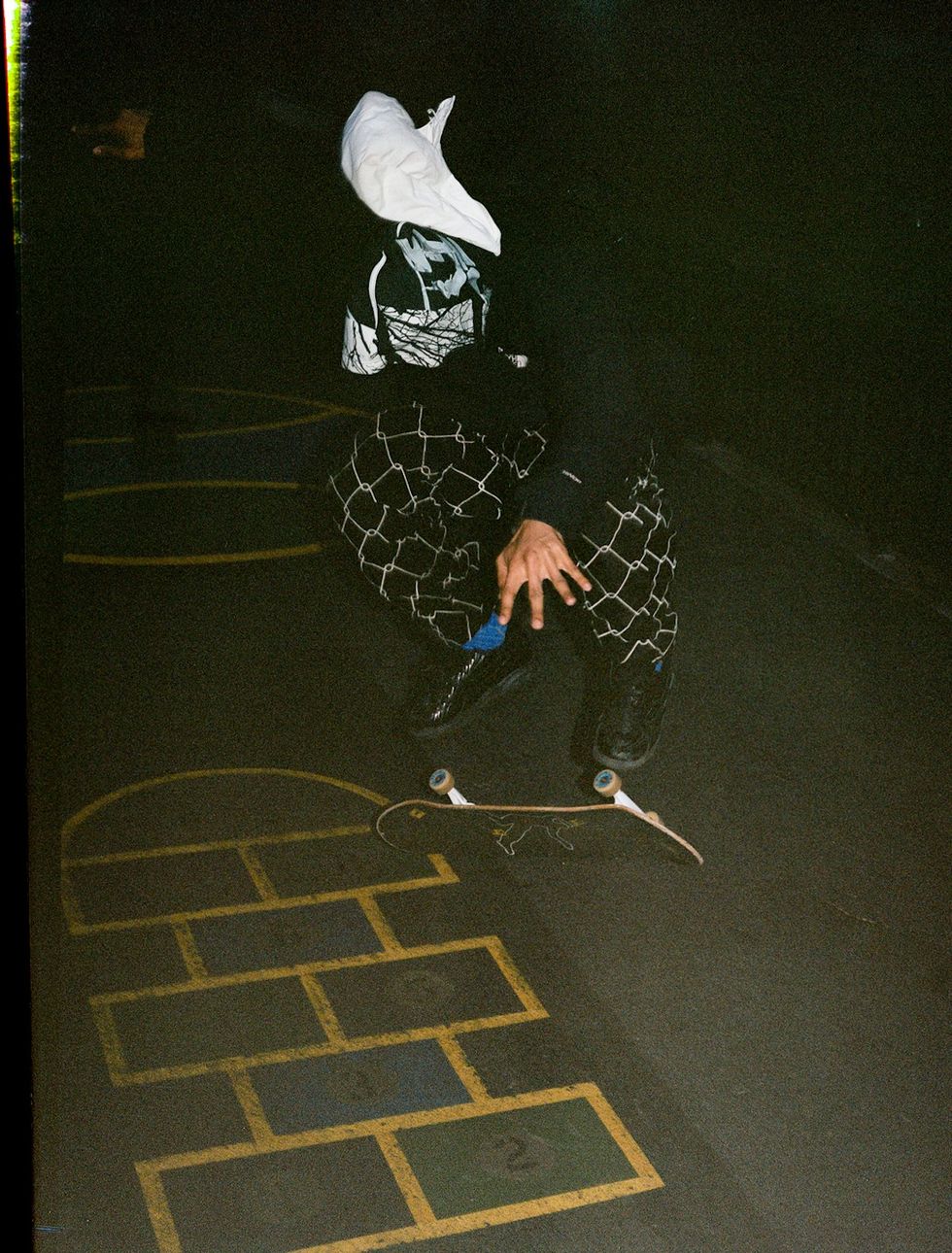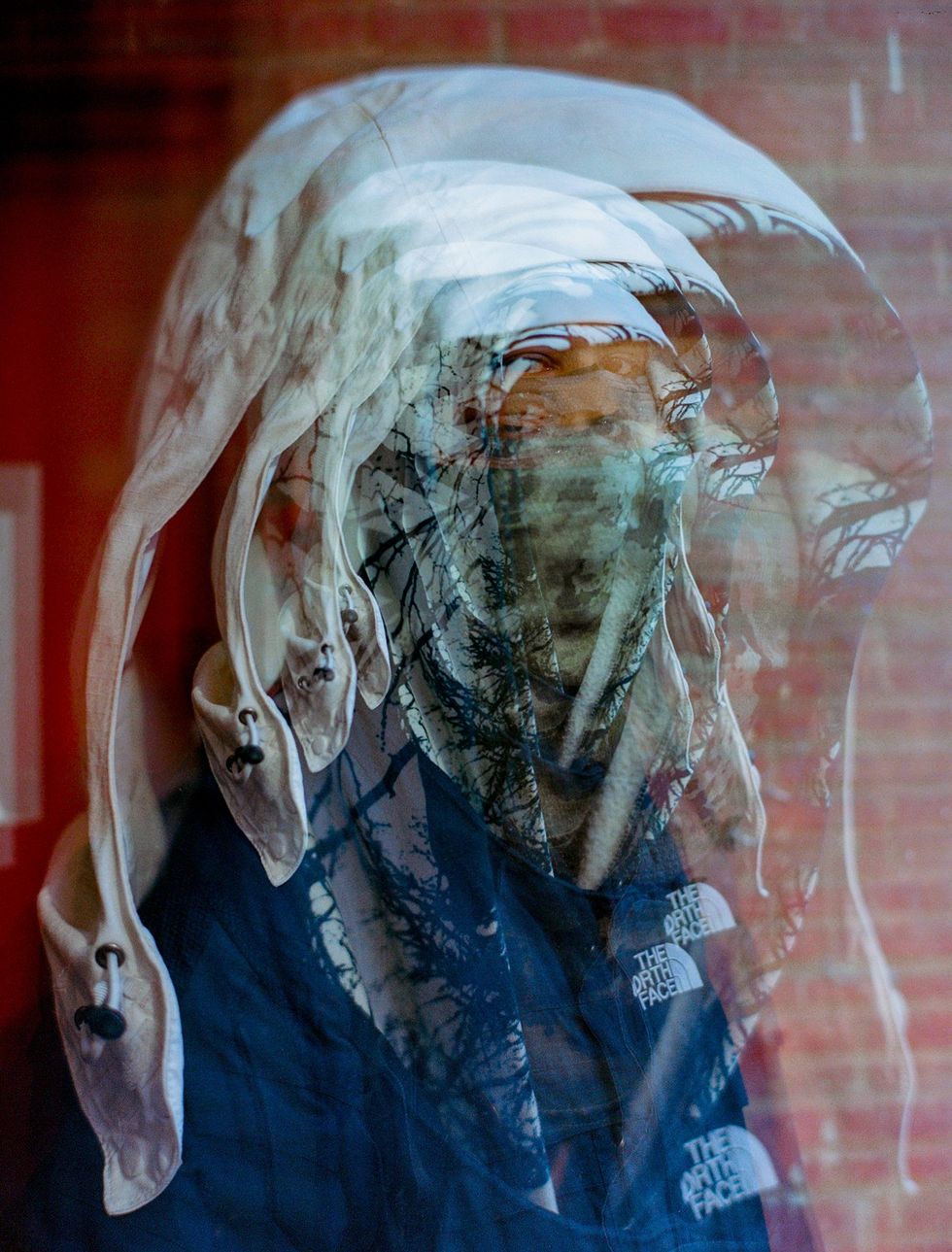
Img 0667 2
Ron Baker, alongside childhood friend Vlad Gomez, launched the streetwear brand Public Housing Skate Team in the mid 2010s. Photo Credit: Koki Sato
To continue reading
Create a free account or sign in to unlock more free articles.
By continuing, you agree to the Terms of Service and acknowledge our Privacy Policy
Register
The content is free, but you must be subscribed to Okayplayer to continue reading.
THANK YOU FOR SUBSCRIBING
Join our newsletter family to stay tapped into the latest in Hip Hop culture!
Login
To continue reading login to your account.
Forgot your password?
Please enter the email address you use for your account so we can send you a link to reset your password:

Growing up, there were no skate parks in Vlad Gomez's neighborhood. Vlad learned to skate by hitting the grounds of Gun Hill Housing Projects, where he lived, and the streets and alleys that surrounded it.
Later, Vlad, along with his lifelong friend Ron Baker, started the streetwear brand Public Housing Skate Team out of those same housing projects. Vlad and Ron are the skate team’s two members: Vlad is the team’s skateboarder, and Ron the team’s videographer. “It’s a two man army,” Vlad told Okayplayer. “Mobb Deep type shit — Capone-N-Noreaga.”
The two began by producing videos of Vlad skateboarding around their North Bronx neighborhood. They soon decided to release a skatewear clothing line to accompany those videos. Since, their brand has found a major foothold in the fashion and streetwear world. Their line of “authentic hood skatewear” — which takes inspiration directly from the environment around them by incorporating different aspects of their lived experiences — has been stocked in Supreme stores and worn by ASAP Rocky and the late fashion icon Virgil Abloh. The success with their clothing line serves not only as a powerful example of authenticity in a streetwear and fashion industry that is becoming increasingly bereft of it, but also an example of self-determination for the rest of the Bronx’s community members.

Vlad and Ron initially met when they were only seven years old. The two both played on Gun Hill’s recreational basketball team where they immediately hit it off. According to Nate Ramos, their basketball coach at the time who has since grown into a mentor-like figure for the two, it was clear from a young age that Vlad and Ron were different from their peers.
“I wasn’t used to seeing kids from the inner-city express themselves in the way that they did,” Ramos said. “They weren't trying to fit in — they had a resilience and strength of character about them that enabled them to not be a follower."
Vlad’s introduction to skateboarding came two years later when he was nine years old. He’d been playing in his neighborhood when he’d seen someone riding a skateboard down the street while doing a handstand. Fascinated, Vlad rushed to buy a shoddy beginner board from a nearby CVS pharmacy and began to learn to skate. He practiced all of the time. However, when he did, he felt he had to hide what he was doing from those around him.
“People around me didn’t like to see me skateboarding, so I tried to do it away from others,” Vlad said. “They didn’t understand it. They looked at it as a toy and would tell me skateboarding was only for white boys. That I was throwing my life away on something that made no money.”
For Vlad, though, skateboarding held valuable lessons that he felt helped him overcome the environment he grew up in. “No skateboard trick happens overnight. You fall, you break boards, sometimes you break bones — but you keep going until that vision for the trick that you have inside of you comes to life,” Vlad said. “It taught me to keep going, to keep coming at things from different angles.”
In 2015, after years of watching and admiring Vlad’s commitment to skateboarding, Ron, who had a VHS camera and was beginning to get into videography at the time, began to film Vlad doing tricks. The two began producing videos of Vlad skateboarding on YouTube, and in 2016, only a few months after the two had begun filming, they came up with the idea to start a clothing line to accompany their videos.
It wasn’t long before the two saw major results with their clothing line. In 2017, only a year after the brand’s first clothing drop, they found their first major customer in a skatewear store based in Japan — Prov Tokyo — that wanted to order the brand’s tees to stock in their store. Around the same time, rap superstar A$AP Rocky began to wear and rep the brand out in public.
From there, the brand began to take off. In 2018, the two earned a cosign from the late streetwear and fashion icon Virgil Abloh when he tweeted out a picture of him wearing one of their T-shirts; in 2019 the brand notched a spotlight from Stock X’s editorial department; and most recently, this past year, streetwear titan Supreme has begun to stock the brand’s T-shirts in their brick and mortar stores.
\u201cFebruary 21, 2018\u201d— virgil abloh (@virgil abloh) 1518490382
For the designs of their clothing, Ron and Vlad take inspiration directly from where they have spent their whole lives: Gun Hill and its surrounding neighborhood. Their logo is a flip of the New York City Housing Authority one. The typeface they use on their branding is taken directly from the numbers and markings stenciled around the projects. The graphics that cover their skateboard decks and T-shirts speak to the events they see in their daily lives.
One of their skateboard decks is patterned with the mugshots of the Bronx 120, the controversial 2016 gang raid that happened at Eastchester Gardens only five minutes from Gun Hill that many say showcases the overreach of the NYPD’s murky gang conspiracy prosecution laws. Another one of their T-Shirts, the one Virgil Abloh wore, depicts a “Ghetto Bird” police helicopter looking for suspects in the projects.
“Our environment is our moodboard,” Ron said. “The stuff we see in our regular life is crazy within itself. Our clothing just documents what we see every day by putting it into a graphic.”
Gun Hill, it should be noted, was not always the gang raids and grittiness that Ron and Vlad’s graphics document however. At the time of the complex’s original construction in 1950, the units in Gun Hill were viewed as extremely desirable for low-income and working class families.
“The housing projects used to have really good community centers, lots of green space, grounds that were kept meticulously clean, hallways that were taken care of, and good air quality,” Mark Naison, a Professor of African American Studies and History at Fordham University, said. “They were seen as an ideal for working class people at the time who were trapped in tenements.”
In the present day, however, the waning of public support for public housing and the near complete loss of federal funding has dramatically changed the makeup of Gun Hill. “There’s a survival mode type of energy in here,” Ron said. “Growing up, there were kids who you’d just seen the other day and the next thing you knew you’d be seeing R.I.P signs of them, candles outside their door. That just became a regular thing.”
This loss of life is something that Ron and Vlad have both experienced in their own families growing up. When Ron was only three years old, his father was killed by gun violence. While Vlad’s father spent 15 years in prison and died when he came home.
In spite of this, the two are adamant that they want their brand to show that — especially at a time when rising crime rates in the Bronx have become an increasing fixation of local media and the city’s mayor Eric Adams — the projects are not all negativity and violence. “All the media I see about public housing is about how terrible it is and all the shootouts — we want to flip that,” Vlad said. “What we really want to project through the brand is that even though this place is looked down upon, there’s a lot of positivity that can come out of it.”
For Ron and Vlad, their design process is an integral part of accomplishing that goal. “We take what we see around us and even if it’s something the rest of the world views as negative we turn it into a positive thing by incorporating it into our brand,” Vlad said. “It’s about shedding these stories in a different light.”

This organic design process also ensures their clothing line remains authentic to them and their experiences. Authenticity is already something that is highly valued in skate culture — in the case of Ron and Vlad’s brand, their nativeness to the inner city Bronx and public housing bestows them the highest authenticity of all: in a world where the fashion industry is constantly expropriating trends from inner-city Black communities, Vlad and Ron are really from the projects.
Ron and Vlad emphasize that the fashion industry must do more to support the creatives and that are from the communities that fashion so frequently emulates without tribute. “If you’re a luxury brand and you’re going to do a shirt based on a graffiti logo for $3,000, at least get a graffiti artist that’s really out here in the streets risking their freedom to spray paint on walls,” Ron said. “Empower the people that are in whatever scene you’re trying to tap into to be involved in the process.”
In this sense, Ron and Vlad are examples of the types of embedded creatives that the fashion and streetwear industry should look to elevate. But even beyond just being an example of authenticity for the fashion industry, as Ramos stresses to me, the most powerful example that Vlad and Ron’s brand sets is to all the other residents of America’s inner-city communities.
“Vlad and Ron refused to let their environment dictate who they became. They were able to think outside the box, think outside the project, think outside the six buildings that are Gun Hill,” Ramos said. “They’re showing these kids that you don’t have to be a ball player, you don’t have to be a gang banger — all of us don’t have to be the same.”
When I ask Ron and Vlad what their plans are for the future of their brand, this ability to boldly dream beyond their current circumstances that Ramos insists is so vital that others in their community see becomes plainly visible.
“Sometime in the future, the dream is to build a skatepark in the projects,” Vlad said, while taking a moment to pause. “Yeah … that right there would be the dream.”
__
Dario McCarty is a part-time writer and part-time UC Berkeley student who writes about politics and hip-hop. Follow his work @pinkbapestas on Twitter.